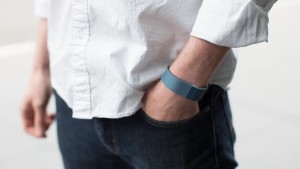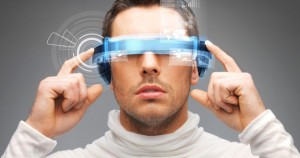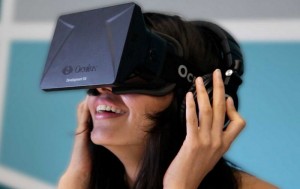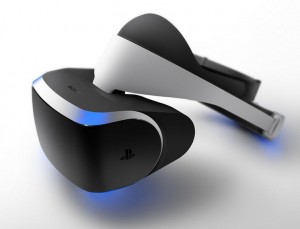Smartwatches, fitness trackers, augmented and virtual reality headsets, lifeloggers and a whole slew of modern consumer electronics are being classified as wearable technology. Here at Smartwatches, we throw that term around quite a bit — after all we are a site dedicated to them. Most of the time the term “wearable device” concerns wrist-worn gadgets such as a fitness tracker or smartwatch. In truth, it can encompass any type of device that is worn or carried on one’s person. If you really want to get technical in that regard, a smartphone could even be considered a wearable device in some circles since people generally have one on them at all times. We’re not going to consider the niche quite that broad, however it does make sense to explore some of the other areas within.
In light of this, we’re going to take a closer look at wearable technology or more specifically what makes a wearable device truly wearable. In addition, we’ll explore some other lesser-known areas of the market and discuss devices that currently exist within them. Furthermore, we’ll take a quick look at the future of the industry and where things are headed.
What is Wearable Technology?
 Keep in mind, this definition is sure to evolve over time as more advanced devices become available and the technology is improved. That aside, wearable technology — or the term “wearable device” — refers to any form of device that you wear on your person, whether that be on your wrist, neck head or elsewhere. In addition, wearable technology usually includes support and the capability to communicate with other devices, like a smartphone, computer or tablet.
Keep in mind, this definition is sure to evolve over time as more advanced devices become available and the technology is improved. That aside, wearable technology — or the term “wearable device” — refers to any form of device that you wear on your person, whether that be on your wrist, neck head or elsewhere. In addition, wearable technology usually includes support and the capability to communicate with other devices, like a smartphone, computer or tablet.
As for the classification, it can be applied to any device that meets those requirements from things like a UV exposure tracker that you wear around your neck to a pair of earbuds that are internet-ready and include native apps and mobile connection support.
In the field of wearable technology there are dozens of categories including smartwatches, fitness trackers, lifeloggers, VR headsets, AR headsets, and much more.
The most important factor that decides whether or not a device fits into wearable tech is simply: whether or not you wear it. To add to that, it doesn’t matter how it’s meant to be worn or where, just that it is.
What are Some Obscure or Unique Areas of Wearable Tech?
 While the most popular wearable technology devices seem to be smartwatches, fitness trackers and their like there are some other areas of the market that don’t quite have the same amount of exposure.
While the most popular wearable technology devices seem to be smartwatches, fitness trackers and their like there are some other areas of the market that don’t quite have the same amount of exposure.
One great example of this is augmented and virtual reality headsets. Of course, Google Glass is a popular device in this niche that had quite a bit of exposure. The area also seems to be picking up a lot of gusty lately with offerings from some big-name tech companies like Sony, Microsoft and more. It’s not until recently, however that this technology became relevant to consumers. Part of this is due to new technology and innovation in the sector, but it’s also due to an increase in interest and awareness.
Other areas include wearable health monitoring devices — not the kind used to track fitness data, but the kind that would be used by licensed physicians, medical staff and hospitals. We’re also seeing an increase in innovation in this sector currently, with a renewed interest in cost-effective tech. In a recent article we discussed a small band-aid sized device that will help doctor’s and medical staff monitor Ebola patients remotely. Pretty amazing stuff.
Finally, you have devices that offer commercial assistance or viability. Think of expensive smartglasses — similar to Google Glass — that allow an employee to pull up documentation, or user-manuals while out in the field. Worried about using that new tool or configuring a piece of equipment properly? No problem! All tutorials, guides and relevant information can be scanned at the drop of a hat thanks to a trusty pair of augmented reality glasses. This is merely one scenario out of an infinite list of possibilities, but you get the idea.
If you’re looking for some real-world wearable technology examples instead of all this theoretical mumbo jumbo, here’s a list of some interesting projects currently in development:
- Brand Killer – a device created by University of Pennsylvania students for the PennApps Winter 2015 hackathon, this augmented reality headset blocks corporate logos and influence in the real world, similar to Adblock.
- Deka Arm – a prosthetic wearable and robotic arm that can be controlled by the wearer’s mind using uniquely tracked brain energy.
- Snow2 – a small device meant to be inserted into ski goggles that will display environmental information and personal data to the wearer such as temperature, traveling speed and more.
- Sensoria Fitness – a fitness and health data tracker that uses textile sensors to glean information from the wearer.
Where is Wearable Technology Going in the Future?
 In just the past decade, computers have been shrunk down to the size of a candy bar — which we carry on us at all times in the form of a smartphone. With each new device, gadget or iteration that size continues to grow smaller. Just take a look at all the smartwatches and wearable tech that’s already available. They aren’t just available, they’re remarkably affordable too.
In just the past decade, computers have been shrunk down to the size of a candy bar — which we carry on us at all times in the form of a smartphone. With each new device, gadget or iteration that size continues to grow smaller. Just take a look at all the smartwatches and wearable tech that’s already available. They aren’t just available, they’re remarkably affordable too.
So, what does this say about the future of wearable tech? What can we reasonably suspect the future of this industry will be? There are no guarantees, mind you and we can’t see far into the future. Most of what we’re going to discuss here is in the form of an educated guess, but to some that’s nothing more than speculation. Take it with a grain of salt.
Strictly speaking, wearable technology is the future. Imagine that you would no longer have to carry a companion device such as a smartphone, but instead a compact wearable that does all the same things. Imagine the restrictions of modern mobile devices being lifted, and that availability being accessible in a wrist-worn or comparable sized device. Imagine prosthetics and extensions of our body that communicate with the technology around us. For instance, your wearable device alerts your smart home that you’re on your way from work and set the temperature to what you like, thaws out meat and veggies that will be used to make dinner and turns on lights for your arrival. As with anything else here, this is merely one scenario in an infinite number of possibilities.
 It’s difficult to say how long all of this will take. In some areas of the market innovation is rampant and happens on a daily basis. In others, it’s slower going and may even take years before advancement is truly seen.
It’s difficult to say how long all of this will take. In some areas of the market innovation is rampant and happens on a daily basis. In others, it’s slower going and may even take years before advancement is truly seen.
Then there’s the matter of security and privacy when it comes to personal technology of any kind. When our lives depend so much on technology like smartphones, tablets, and smartwatches it’s difficult to imagine these things as dangerous. Unfortunately, a lack of personal privacy and security can be very dangerous. With so much technology being adopted into our everyday lives, we can easily surrender these rights without even knowing so. It’s important we ensure this doesn’t happen. It is possible to rely on technology without losing these things, it’s just a matter of fighting for it. This is not something to discuss here in full. We’ll save that for another day.
